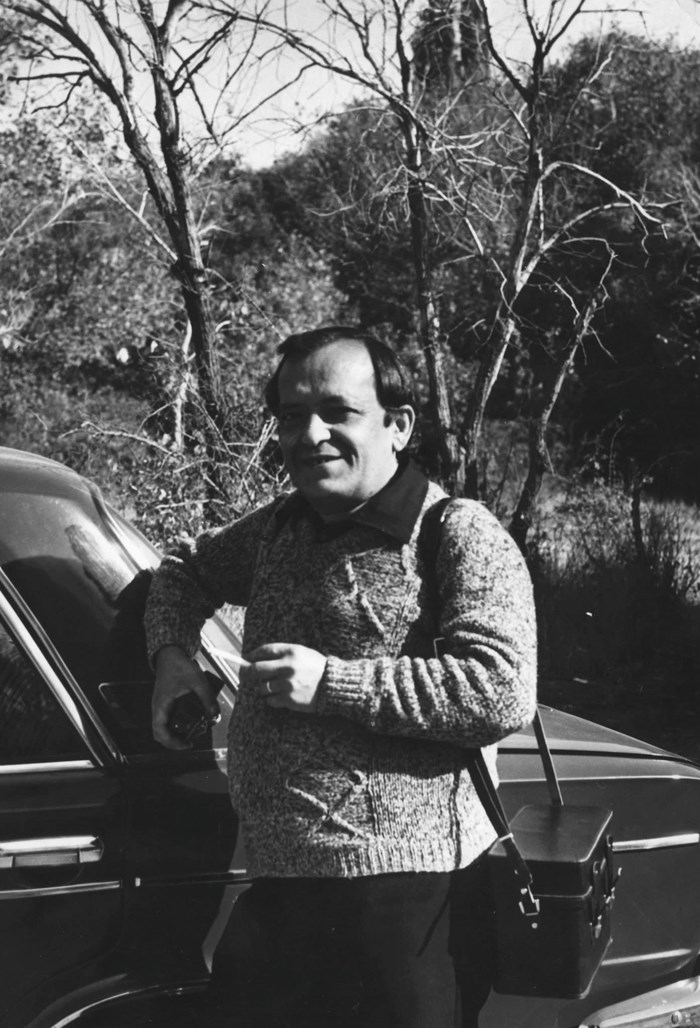
Leonid Vahrami Mayilyan
1937 - 1987
1950 - 1980s
Leonid Mayilyan appeared on Armenia’s photographic scene in the early 1960s. He was one of the young amateur photographers who made their first trials in the medium at the newly-established Yerevan photo-club, subsequently garnering attention at various republican contests and exhibitions.(1) After being featured in the Sovetskoe Foto (Soviet Photo) magazine’s issue dedicated to Armenian photography, Mayilyan started corresponding with the local periodical press and both his reportages and artistic studies started to appear frequently in Sovetakan Hayastan (Soviet Armenia), Communist, Sovetakan Arvest (Soviet Art), Hayastani Ashkhatavoruhi (Female Worker of Armenia) and other magazines. In tandem with photography, Mayilyan also taught Russian language and literature at the Yerevan State University where he had previously received a degree in linguistics at the philological faculty.(2)
The photographer’s studies of urban life, are distinguished by the unexpected audacity of their compositions and the freedom with which Mayilyan explored the subject of youthful awakening. Made between the 1960s-70s, these photographs of children and adolescents often depict their subjects outside of the ideological normatives enforced by the Soviet social-political system. Instead, nature and the city are turned into a stage for expressing private emotions and desires. Capturing his characters in moments of dynamic movement and action, Mayilyan’s photographic images make explicit the turn of the Soviet culture towards the reconsideration of subject’s individual identity and inner world.
Employing high contrast lighting, Mayilyan tends to show his subject from sharp and slanted angles, thus destabilising the viewer's gaze and normative, ‘frontal’ perceptions of reality. Instead, as with earlier representatives of the European and Russian avant-gardes of the 1920s, he stresses photography’s factor as a means of imagining and seeing the world anew. Divested of the "burden" of ideology and propaganda, these works evidently portray not only the cultural freedom brought about by Khrushchovian ‘Thaw’, but also the tentative attempts of local photographers to bring the medium back to the realm of art.
1) ‘Fotolyubiteli Armenii’ [‘Photo-amateurs of Armenia’, in Russian], Sovetskoe Foto, no.7, 1965, p.14
2) Arman Gasparyan, ‘L. Mayilyani Hishatakin Nvirvats Lusankarneri Tsutsahandes’ [‘Photography Exhibition Dedicated to the Memory of L. Mayilyan’, in Armenian] www.armenpress.am, 20.06.2006, https://armenpress.am/arm/news/423990/bacvec-C3BDotolragrox-l-mayilyani-hishatakin-nvirvats-------.html
Nationality
Armenian
Region
USSR, ArmSSR
City
Yerevan
Activity
artistic, documentary, photo correspondent
Media
analogue photography
Bibliography
‘Fotolyubiteli Armenii’ [‘Photo-amateurs of Armenia’, in Russian], Sovetskoe Foto, no.7, 1965, p.14
Kochar, Vahan. Hay Lusankarichner [Armenian Photographers, in Armenian], self-published, Yerevan, 2007, p.231
Mayilyan, Anna. Leonid Mayilyan, Saghmos Cultural Center, Yerevan, 2006
Exhibitions
2006: Leonid Mayilyan, solo exhibition, National Gallery of Armenia, Yerevan, June 20-July

